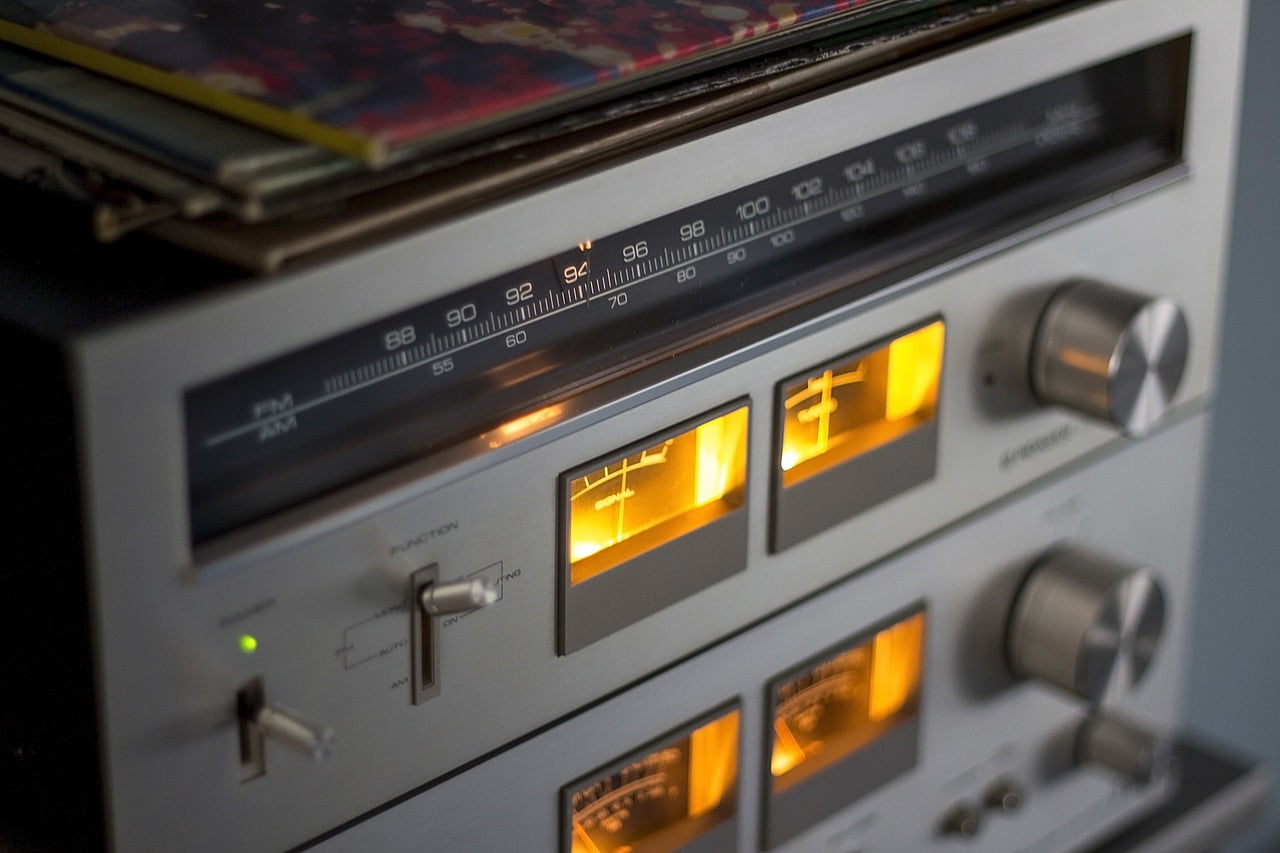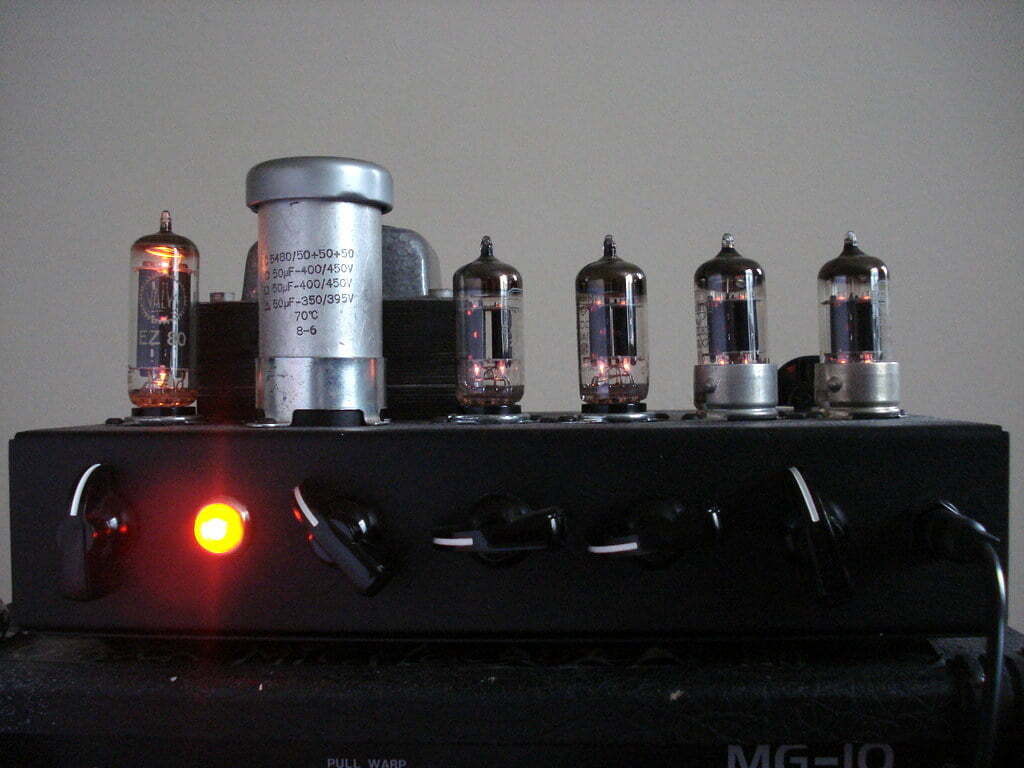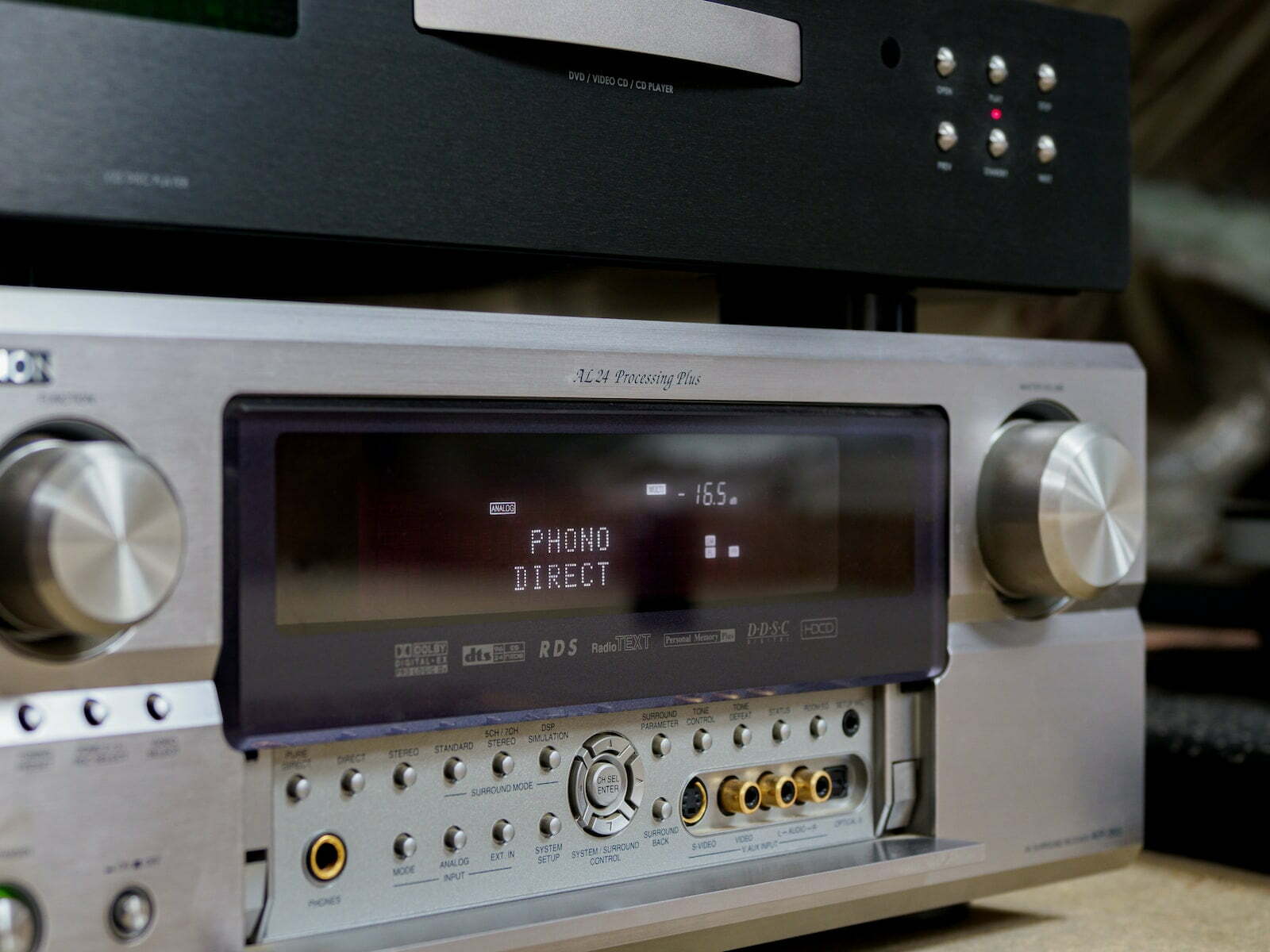
An amplifier is an electronic device that increases the voltage, current, or power of an electrical signal. It takes an input signal, such as an audio signal, and amplifies it to a higher level, allowing it to drive a speaker or other output device.
The basic operation of an amplifier is as follows: the input signal is applied to the amplifier’s input, which can be a microphone, instrument, or other source. The amplifier then increases the voltage or current of the input signal, creating an output signal that is larger in amplitude. This output signal can then be used to drive a loudspeaker or other output device, producing a larger and more powerful sound.
Amplifiers are used in a wide range of electronic devices, including radios, televisions, musical instruments, and home theater systems. They can be designed to amplify different types of signals, such as audio or radio signals, and can use a variety of technologies, including vacuum tubes (Tube amps) and transistors (Solid-state amps).
Amplifiers also come in “combo” configuration (integrated with speaker) like guitar cabinets usually are, or integrated into an active speakers, or as separate electronic devices.

Tube amps
Tube amps, also known as valve amps, use vacuum tubes to amplify the signal, while solid-state amps use transistors. The main difference between the two is the way they produce distortion. Tube amps produce a warm, rich, and harmonically complex distortion that is considered more pleasing to the ear, while solid-state amps produce a more precise, clean, and compressed distortion.
Tube amps tend to have a more organic and dynamic sound, with a natural compression that is often described as “breathing.” They also tend to have a more pronounced midrange, which can be desirable for certain genres of music, such as blues or classic rock. Tube amps are generally more expensive and require more maintenance, as the vacuum tubes need to be replaced periodically.
Things to consider when getting a tube amp:
- Budget: Tube amplifiers can be more expensive than solid-state amplifiers due to the cost of the vacuum tubes and the higher-quality components used in the construction. It’s important to set a budget and find a tube amp that meets your needs within that budget.
- Power: The power of a tube amp is measured in watts, and it’s important to choose an amp with the appropriate power for your needs. Higher-wattage amps can provide more headroom and volume, but they may not be necessary for home use or smaller venues.
- Tone: Different tube amps can produce different tones depending on the number and type of vacuum tubes used, as well as the quality of the other components. It’s important to choose an amp with a tone that suits your preferences and the type of music you play.
- Maintenance: Tube amplifiers require more maintenance than solid-state amplifiers, including periodic replacement of the vacuum tubes. It’s important to factor in the cost and effort of maintenance when choosing a tube amp.
- Compatibility: Tube amps are often paired with specific types of speakers, so it’s important to choose speakers that are compatible with the tube amp you choose.
- Portability: Tube amps can be heavier and bulkier than solid-state amps, so it’s important to consider the portability of the amp if you plan to transport it frequently.
Solid-state amps
Solid-state amps, on the other hand, are generally more reliable, lighter, and less expensive than tube amps. They also tend to be more versatile, with a wider range of tones available. Solid-state amps are often preferred for genres that require a tight and precise sound, such as metal or funk.
The term “solid-state” refers to the use of solid-state electronic components, such as transistors, in the design of an amplifier. In a solid-state amplifier, the amplification of the electrical signal is accomplished by the use of these electronic components, which are made from solid materials and do not rely on vacuum tubes, as is the case with tube amplifiers.
Things to consider when getting a solid-state amp:
- Power: The power of a solid-state amp is measured in watts, and it’s important to choose an amp with the appropriate power for your needs. Higher-wattage amps can provide more headroom and volume, but they may not be necessary for home use or smaller venues.
- Tone: Different solid-state amps can produce different tones depending on the type of circuitry and other components used in the design. It’s important to choose an amp with a tone that suits your preferences and the type of music you play.
- Features: Solid-state amps can come with a variety of features, such as built-in effects, channel switching, and headphone outputs. It’s important to choose an amp with the features that are most important to you and your playing style.
- Portability: Solid-state amps can vary in size and weight, so it’s important to consider the portability of the amp if you plan to transport it frequently.
In general, tube amps are preferred for their warm and organic sound, while solid-state amps are preferred for their reliability and versatility. However, the choice ultimately depends on the musician’s personal preference and the specific needs of the music they are playing.











































































































